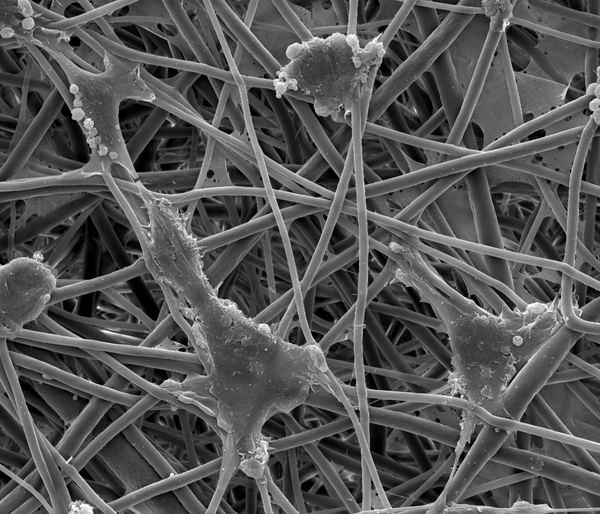Biomaterials and implant surfaces
Biomaterials encompass a wide range of different material classes, including metals, polymers, ceramics as well as composites that are in direct contact with the tissues of the body. In addition to good biological compatibility, biomaterials must also meet a variety of other requirements, depending on the task and area of application.
In the interdisciplinary research field "Biomaterials and Implant Surfaces", the necessary mechanical functionality is combined with the desired structure and chemistry of the surface.
Both degradable and permanent polymeric biomaterials are used for this purpose. These can be used as coatings to modify the surface of implants or medical devices. The polymers are processed using different technologies, e.g. spray coating, 3D printing, electrospinning and electrospraying.
This enables the development of combination products - implants with active ingredient functions - and controls the implant-tissue interaction. Functional coatings for established medical devices are developed to improve implant tolerability, function and healing. Other surface modifications focus on plasma and wet chemical treatments. Targeted synthesis is another way to optimise the properties of biomaterials.
The characterisation and analysis of modified biomaterials focuses on bulk and surface properties as well as mechanical parameters during the individual process steps. The spectrum of methods includes infrared spectroscopy, Raman spectroscopy, tensiometry, scanning electron microscopy, energy dispersive X-ray spectroscopy (EDX), X-ray photoelectron spectroscopy (XPS), differential scanning calorimetry (DSC).

